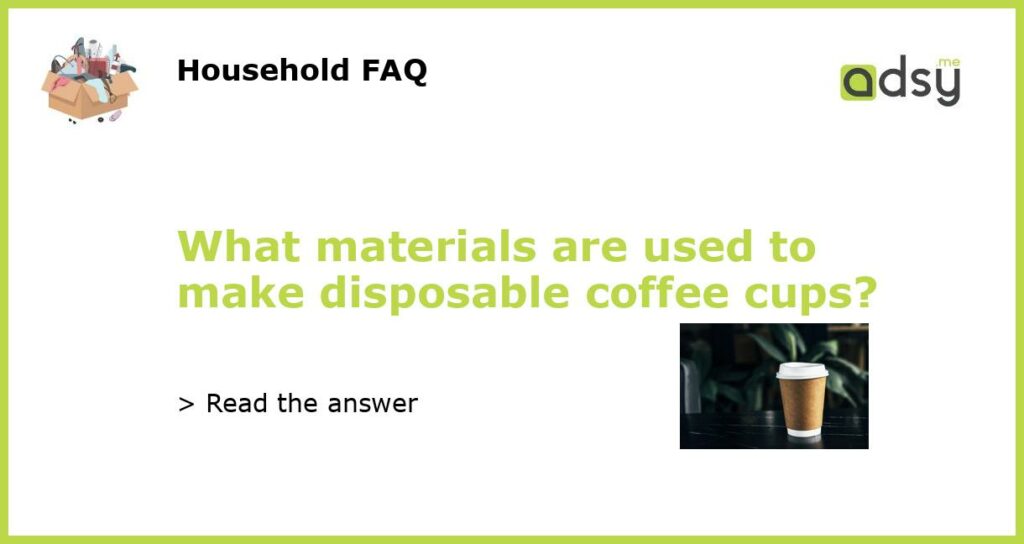The Rise of the Disposable Coffee Cup
In recent years, the use of disposable coffee cups has risen tremendously. With the rise of coffee culture across the world, many people choose to take their coffee on-the-go. To meet this demand, cafes and coffee houses have started to offer convenient disposable cups as an alternative for their customers. However, most people are unaware of the materials used to make these disposable cups.
The Major Components of Disposable Coffee Cups
Disposable coffee cups are typically made of paperboard, which is a type of paper that is thicker and more durable than regular paper. The inside of the cup is lined with a thin layer of plastic, which is used to prevent liquids from leaking through the paper. The lid of the cup is usually made of plastic, and a small stopper is attached to the lid to prevent spills.
The Environmental Impact of Disposable Coffee Cups
While disposable coffee cups are convenient, they have a significant impact on the environment. Only a small percentage of disposable cups are recycled, and the majority end up in landfills. The plastic lining on the inside of the cups makes them difficult to recycle. In addition, the production of disposable cups requires a significant amount of energy and resources.
Alternatives to Disposable Coffee Cups
Fortunately, there are alternatives to disposable coffee cups. Many cafes and coffee houses offer discounts to customers who bring their own reusable cups. These cups can be made of materials such as ceramic, glass, or stainless steel, which are more eco-friendly alternatives to disposable cups. By using a reusable cup, customers can reduce their environmental impact and save money in the long run.
The Need for Sustainable Coffee Cup Solutions
In order to address the environmental impact of disposable coffee cups, there is a need for sustainable solutions. One potential solution is the development of compostable cups, which can be broken down in an industrial composting facility. Another solution is the use of innovative new materials, such as bamboo or algae-based materials, to create more eco-friendly cups. By working together, consumers, coffee houses, and manufacturers can help reduce the impact of disposable coffee cups on the environment.






